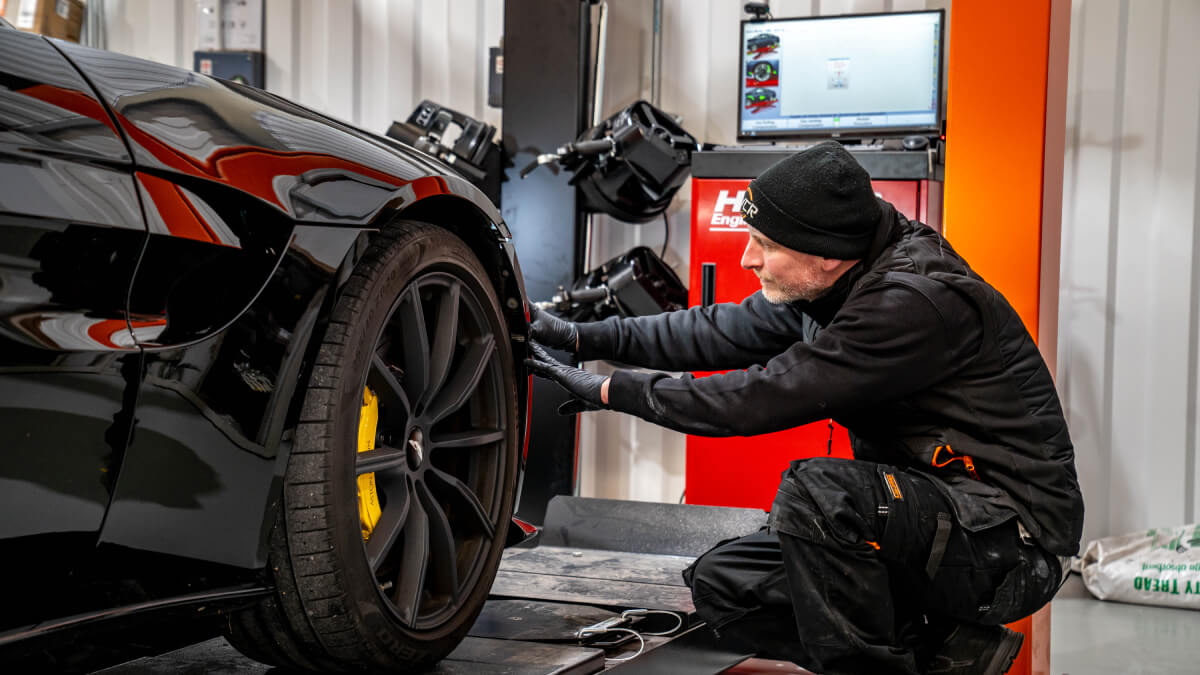Looking after your car can often feel like a game of whack-a-mole. When you get rid of one problem, another one pops up. That’s why wheel alignment can often get forgotten about. However, alignment doesn’t just look after your wheels; it also goes a long way in protecting the rest of your car.
When your wheels are out of line, you might find yourself constantly correcting the steering wheel, experiencing uneven tyre wear, or noticing that your car pulls to one side. These issues aren’t just annoying – they can be costly if left unchecked and may even compromise your safety on the road.
So, in this article, we’re going to break down everything you need to know about wheel alignment in the simplest terms possible. Whether you’ve noticed your car behaving differently or you’re just looking to stay on top of your vehicle’s health, our experienced team is on hand to keep you heading in the right direction.
VCR Guide: What Is Wheel Alignment?
Right then, let’s dive into the world of wheel alignment and get you clued up on everything you need to know. In this guide, we’ll be covering all the essential information to help you understand wheel alignment and make informed decisions about your vehicle’s maintenance. Here’s what we’ll be exploring together:
- What Is Wheel Alignment?
- Is Wheel Alignment The Same As Tracking?
- How Do Wheels Become Unaligned?
- How Long Does Wheel Alignment Take?
- Do I Need Wheel Alignment?
- How Much Is Wheel Alignment?
By the end of this guide, you’ll be well-equipped to recognise when your car needs attention and understand exactly what’s involved in the wheel alignment process.
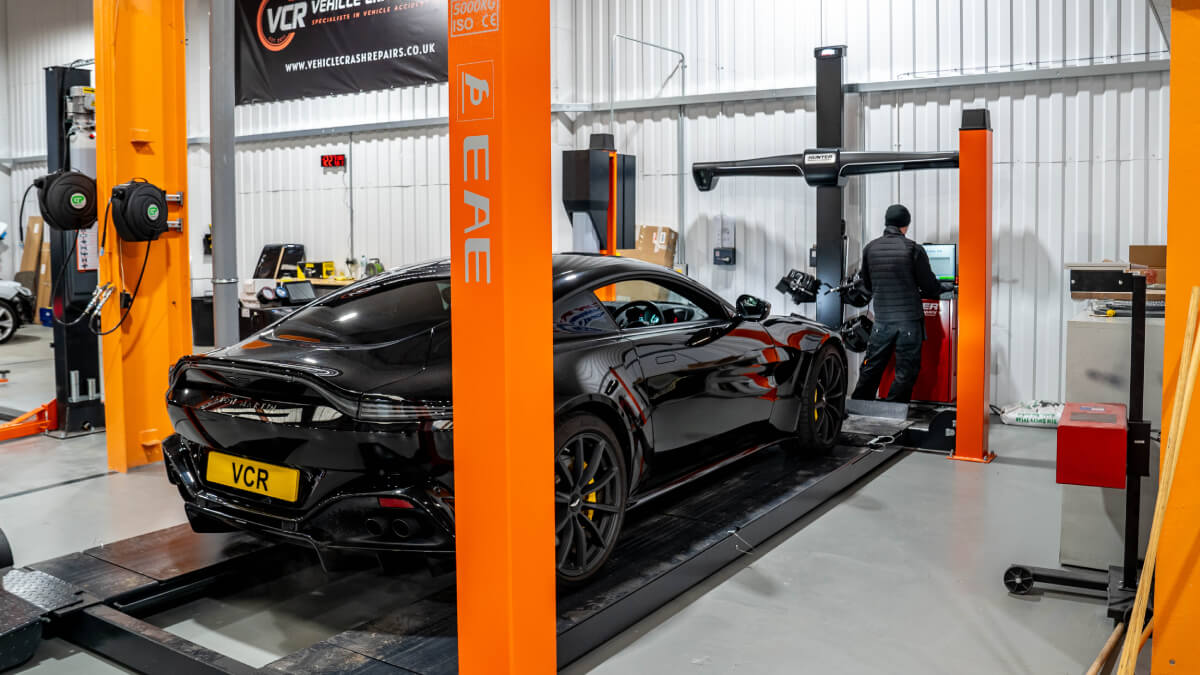
What Is Wheel Alignment?
Wheel alignment is the process of adjusting your car’s wheels so they’re set to the manufacturer’s specifications and positioned correctly relative to each other and the road.
When your wheels are correctly aligned, your tyres wear evenly, which means they’ll last longer and save you money. Your fuel efficiency also improves because your engine doesn’t have to work as hard when there’s no unnecessary friction from misaligned wheels.
Perhaps most importantly, proper alignment significantly improves your driving safety. When your wheels are aligned, your car responds predictably to your steering, maintains better contact with the road surface, and braking performance improves.
Is Wheel Alignment The Same As Tracking?
We get this question all of the time! While the terms “wheel alignment” and “tracking” are frequently used interchangeably, they’re actually referring to slightly different aspects of your wheel positioning.
Tracking specifically refers to the toe angle of your wheels – essentially, whether your wheels are pointing straight ahead or slightly inward or outward when viewed from above. Wheel alignment, on the other hand, is the broader term that encompasses tracking plus other angles like camber and caster.
The confusion often stems from the fact that tracking was historically the most common adjustment needed on older vehicles, so the term stuck around even as technology advanced. Modern vehicles require more precise adjustments across all angles due to their sophisticated suspension systems.
At Vehicle Crash Repairs, when you book a wheel alignment service with us, we check and adjust all the relevant angles for your specific vehicle, ensuring everything is set to the manufacturer’s exact specifications.
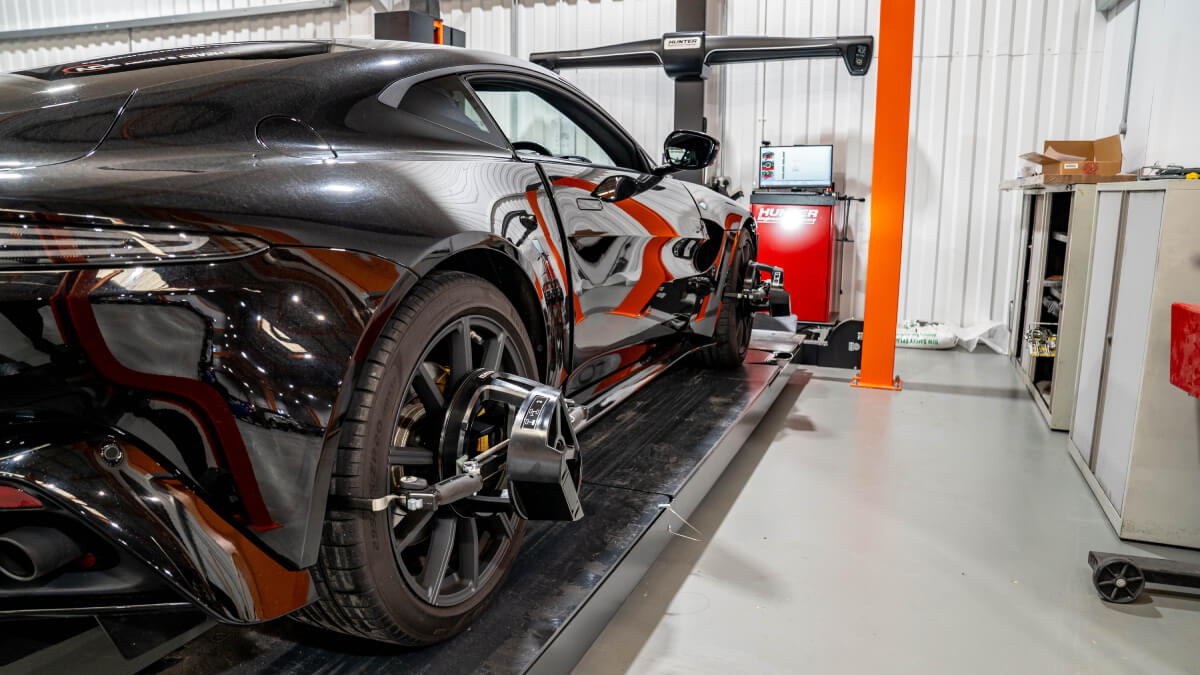
How Do Wheels Become Unaligned?
The truth is, wheel misalignment is incredibly common and can happen to any car, regardless of how carefully you drive.
Everyday driving is actually one of the most common causes. Every time you drive over a pothole, speed bump, or uneven road surface, you’re putting stress on your suspension and steering components. UK roads, with their notorious potholes, can be particularly challenging for maintaining proper alignment.
Minor accidents and impacts are another frequent culprit. Even something as simple as bumping a kerb while parking, hitting a pothole too hard, or having a minor scrape can knock your wheels out of alignment.
Normal wear and tear on suspension components also plays a role. As your car ages, parts naturally wear down, which can gradually affect your wheel alignment.
However, regardless of these specific scenarios, we recommend that your wheels be realigned at least once a year as part of your regular maintenance routine.
Here are the key situations when you should definitely consider getting your wheels realigned:
1. You get new tyres – Fresh tyres deserve proper alignment to ensure even wear from day one.
2. You get any kind of steering or suspension repair – Whenever work is done on components that affect wheel positioning, alignment should be checked.
3. You notice steering issues – If your car pulls to one side, the steering wheel sits off-centre when driving straight, or the steering feels different.
4. You notice abnormal tyre wear – Uneven wear patterns or excessive wear on one edge are red flags that alignment might be the culprit.
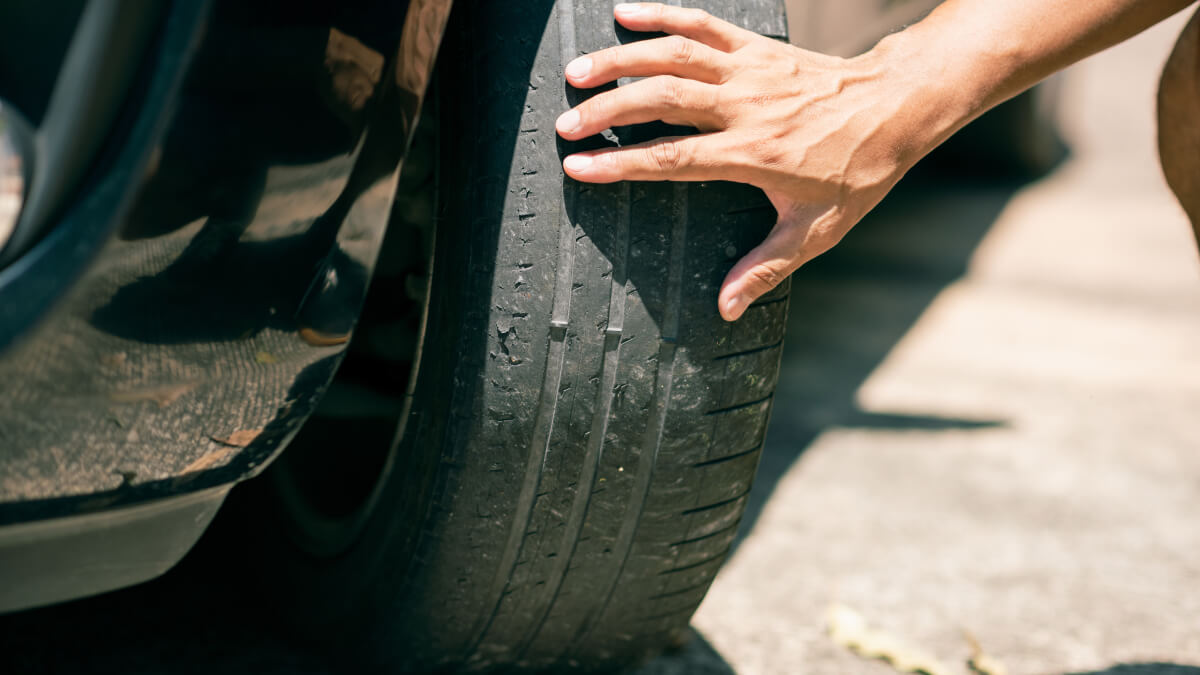
How Long Does Wheel Alignment Take?
One of the most common questions we get is how long the wheel alignment process takes, and the honest answer is that it depends on several factors, particularly the make, model, and age of your car.
Newer cars (typically those under 5 years old) are generally the quickest to align. These vehicles can usually be completed in about 15-20 minutes. The suspension components move smoothly, the adjustment points are easily accessible, and there are rarely any seized or worn parts to complicate the process.
Cars that are 5-10 years old typically take around 30-40 minutes to complete. This is because some components may have developed wear, and adjustments might require more careful handling.
Cars that are older than 10 years might take upwards of an hour to align properly. Components may have seized or corroded over time, requiring extra attention to free them up safely. The additional time for older cars also allows our technicians to thoroughly inspect the suspension and steering components.
Vehicle-specific factors also play a role in timing. Some manufacturers design their cars with more accessible adjustment points, while others require more time-consuming procedures.
It’s worth noting that these timeframes assume straightforward alignment work. For example, many of our clients who have been in an accident visit our repair centre for dented panel repairs in Milton Keynes but, because of the impact, also need wheel alignment. We would carry out the wheel alignment first and then make any cosmetic repairs, prolonging the repair time. Another scenario that may prolong the process is if we also discover worn components that need replacing.
@everyonelovesanucar HOW LONG does it take to do a TIRE ALIGNMENT?? #car #cars #everyonelovesanucar #dealership #dealershiplife #carsales ♬ original sound – Nucar
Do I Need Wheel Alignment?
Recognising the signs that your car needs wheel alignment can save you money on tyres, improve your fuel efficiency, and keep you safer on the road. Most alignment issues give you plenty of warning signs before they become serious problems.
Here are the key signs to watch out for:
- Uneven steering – If you find yourself constantly making small corrections to keep your car driving straight, or if you feel like you’re wrestling with the steering wheel on straight roads, your wheels are likely out of alignment. This is particularly noticeable on motorways, where you should be able to drive straight with minimal steering input.
- Uneven tyre wear – Look at your tyres and see if they’re wearing more on one edge than the other, or if the wear patterns are different between left and right tyres. Tyre safety regulations require adequate tread depth across the entire width of the tyre, so uneven wear can quickly lead to MOT failures.
- Vibrating steering – If your steering wheel shakes or vibrates when driving on smooth roads, particularly at higher speeds, alignment problems could be the culprit.
- Squealing tyres – During normal driving (not hard cornering or braking), squealing tyres are a warning sign. When wheels are misaligned, tyres can scrub against the road surface rather than rolling smoothly, creating noise and excessive wear.
- Car pulls to one side – When driving on level, straight roads, your car shouldn’t naturally drift. This is different from the natural pull you might experience due to road camber – alignment-related pulling is more persistent and noticeable.
- Off-centre steering wheel – When driving straight, your steering wheel should be centred. If you need to hold the wheel at an angle to maintain straight-line driving, your alignment is likely off.
If you’ve noticed any of these signs, it’s worth booking an alignment check with our team. Even if you’re not experiencing obvious symptoms, automotive maintenance schedules recommend annual alignment checks as preventative maintenance.
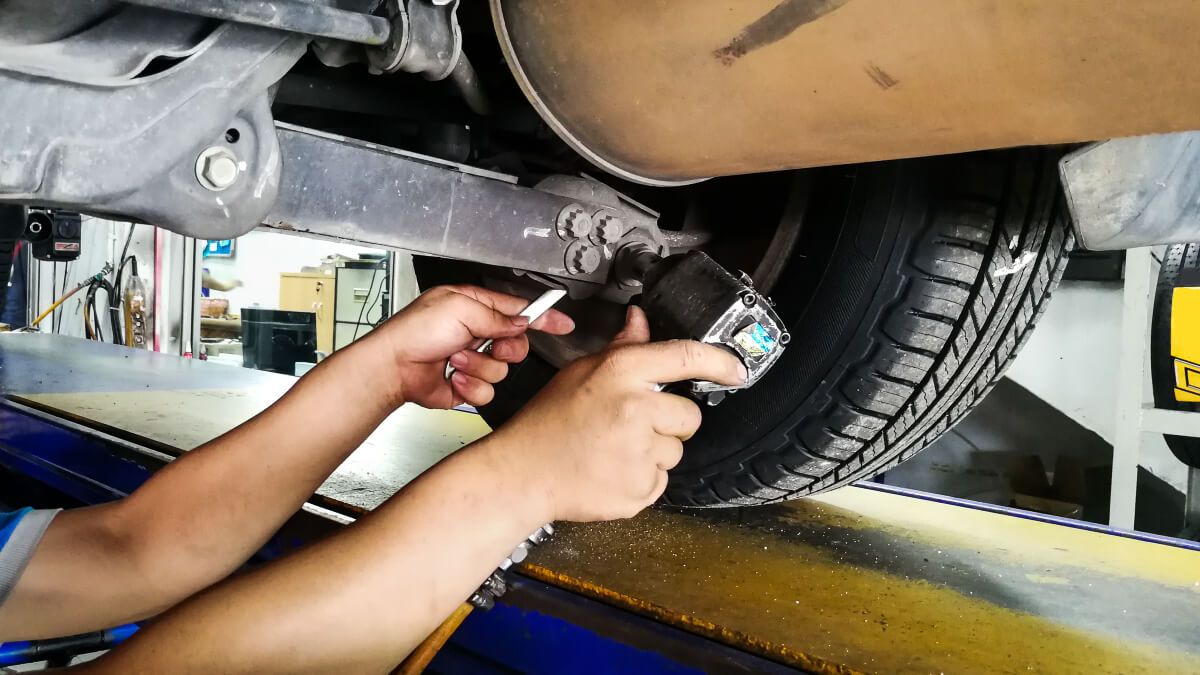
How Much Is Wheel Alignment?
The good news is that wheel alignment is generally quite affordable, especially when you consider the money it can save you in the long run.
According to Checkatrade, the average cost for four-wheel alignment in the UK is around £70, while front or rear-wheel alignment typically costs about £35. These figures give you a good baseline for what most drivers can expect to pay across the country.
However, alignment costs can vary based on several factors. Different vehicle types may require different approaches, and older vehicles that require more time and attention might be priced slightly higher than newer cars with easily accessible adjustment points.
For the most accurate quote for your specific vehicle, we’d recommend getting in touch with our team at Vehicle Crash Repairs. Every car is different, and factors like your vehicle’s age, condition, and any additional work that might be needed can affect the final price. Our experienced technicians can provide you with a clear quote that covers everything your car needs.
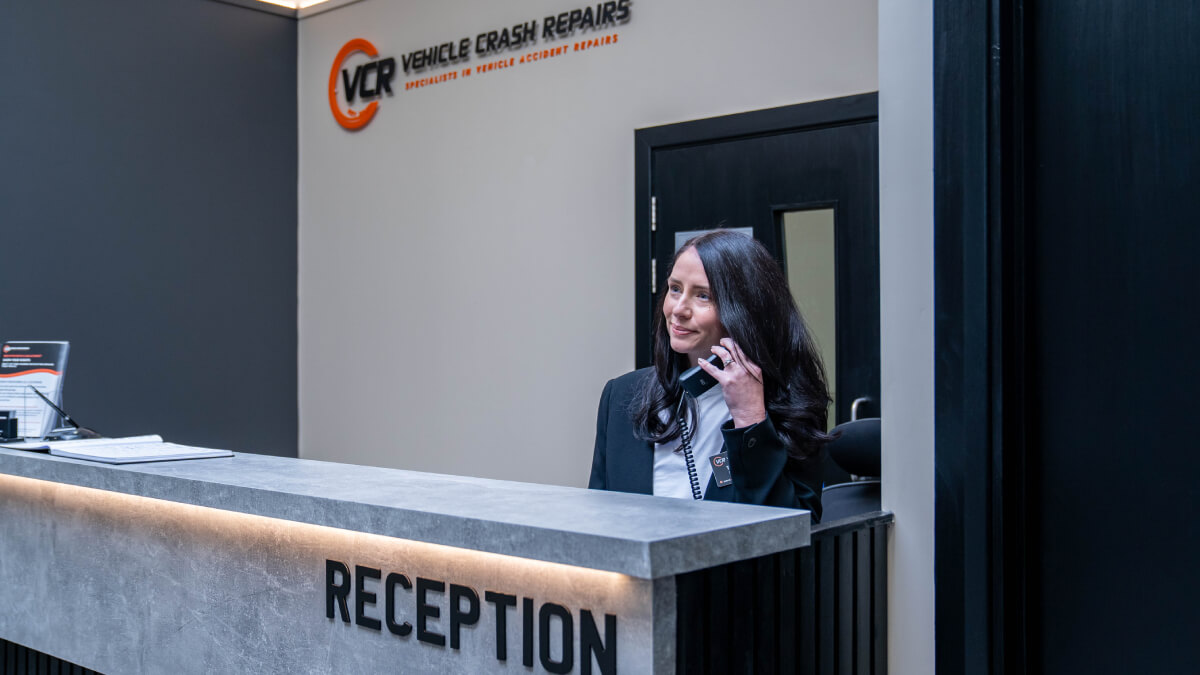
Book Your Wheel Alignment With VCR
Well, there you have it – everything you need to know about wheel alignment, from understanding what it actually means to recognising when your car needs attention. We’ve covered the differences between alignment and tracking, explored the common causes of misalignment, discussed realistic timeframes for the work, and helped you identify the warning signs that indicate it’s time for professional attention.
The key takeaway is that wheel alignment isn’t just about making your car drive straight – it’s about protecting your investment in tyres, improving your fuel efficiency, and ensuring your safety on the road. Whether you’ve noticed your car pulling to one side, spotted uneven tyre wear, or you’re simply due for your annual alignment check, taking action sooner rather than later will save you money and hassle down the road.
At Vehicle Crash Repairs, we’ve been keeping motorists safe for years through services like ADAS calibration, wheel alignment and car body repairs in Milton Keynes. Our experienced technicians understand that every car is different, and we take the time to properly assess your specific needs. Whatever your vehicle’s needs, get your quote today.


